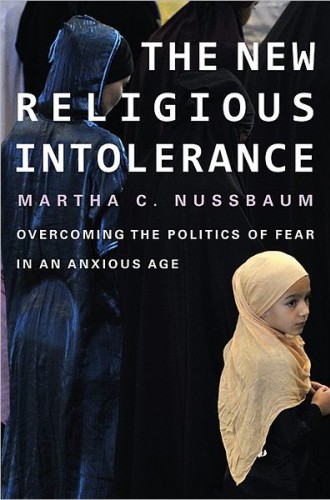The New Religious Intolerance, by Martha C. Nussbaum
Martha Nussbaum continues her critical reflection on the ways in which a democratic society can practice justice and provide well-being for all its members. As we have come to expect, she compellingly combines erudite critical analysis with intense moral passion. Her topic here is religious hate in the United States that targets Muslims. Her argument is not aimed at those who give themselves over to emotive ventilation, because such persons would not linger over her proposals. Rather, she addresses those who are responsible members of society and have an obligation and an opportunity to provide protocols, practices and procedures that will safeguard vulnerable people who are victimized by such hate.
Her book begins with two probes into the situation of intolerance. She focuses on the proposed debate over a mosque in lower Manhattan and on disputes over Shari‘a laws and headscarves. She considers the passion for social homogeneity and the fear of others that is based variously in appeals to “blood, soil, ethnolinguistic peoplehood.” She looks to Finland, India and Australia for examples of the capacity to imagine shared goals and ideals.
In an earlier book, The Clash Within, Nussbaum explored the capacity to entertain the other as key to a democratic society. Now she considers vigorous angry resistance to the other. Her acute analysis of social fear carries her all the way back to Aristotle, who pondered how people can manufacture fear by imagining that a threat is close at hand. She cites a number of cases in which a cascade of orchestrated fear has escalated into a frantic, narcissistic sense of free fall and loss. The outcome, in cases such as the opposition to minarets in Switzerland and Homeland Security’s orange alert, is “a purely notional campaign against a threat that does not exist.”





